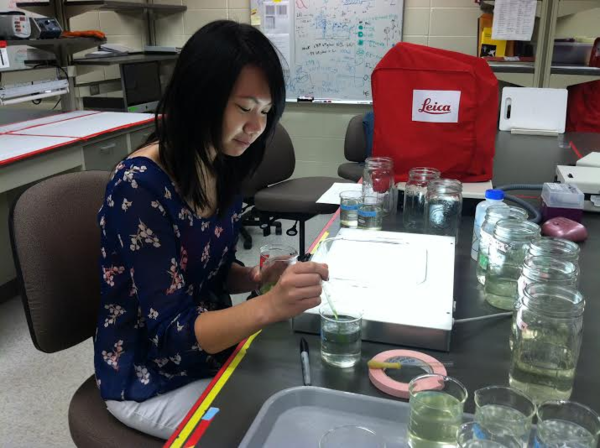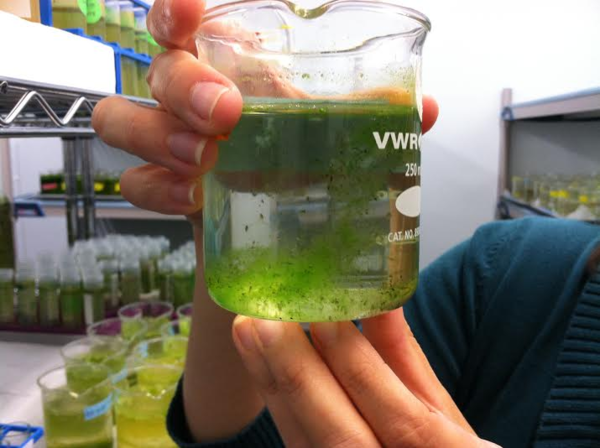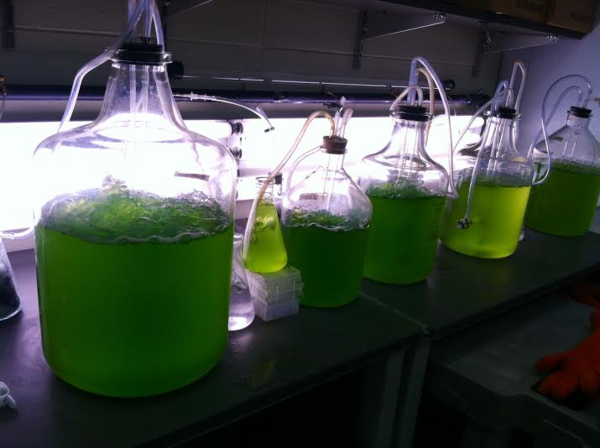
Tucked away inside 112 Galvin Life Science Center, you will find jugs of bubbling green solution containing single-celled algae. This is the food source for the daphnia colonies that are studied in the Evolutionary & Ecological Genomics Lab, led by Dr. Michael Pfrender. I sat down with lab manager Jacqueline Lopez to learn more about the exciting projects underway.
The lab focuses on monitoring the effects of environmental stressors such as a changes in water, agriculture, climate, and invasive species on population-level ecosystem dynamics. The lab is unique in that they do not use toxins in their projects but focus on abiotic and biotic stressors. One of the most intriguing projects surrounding their unique daphnia cultures focuses on the RNA transcriptome of several daphnia genotypes. Researchers can then view each clone’s life history and compare it with its genome to gain insights into the interactions of phenotype and genotype. In a second project with daphnia, the genomes of a UV-tolerant, one pigmented clone and a non-pigmented clone with DNA repair polymerase are being studied in order to trace the divergent evolution.

The laboratory is not limited to Daphnia: another project studies the recent decrease in the spotted blue salamander population. Chytrid, an infectious disease most commonly found among frogs, has jumped to this host which unfortunately does not have immunity. The lab is researching how new ecosystems and selection pressures can influence immune system responses.
Dr. Pfrender commented that the lab’s “whole business is environmental health so [they] are very interested in green practices and sustainability.” In addition to avoiding toxins in their research, the lab uses eco-friendly products, minimizes energy consumption, maximizes storage spaces, and shares space and chemicals with other labs whenever possible. “Our laboratory culture believes that even the small acts of sustainability and conservation translate to a large impact over time,” said Lopez. “Active practices of sustainability is something that is inherent within their laboratory culture,” continues Lopez. This lab is truly a dynamic space and the members are passionate about their projects, research techniques, and community.

To learn more about Dr. Pfrender’s Lab, visit http://www3.nd.edu/~mpfrende/.